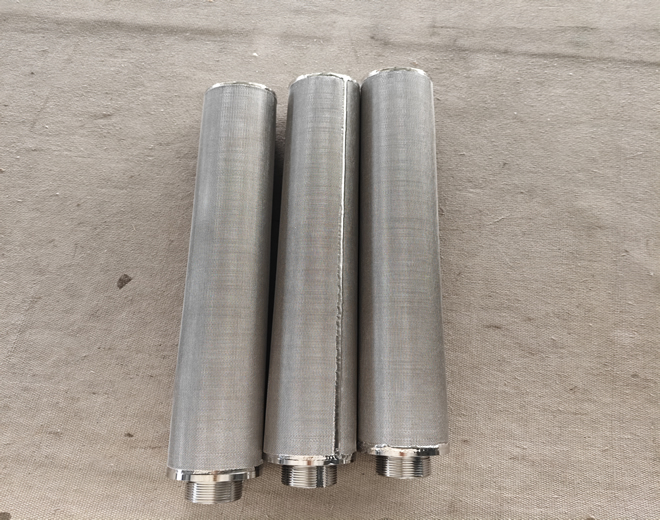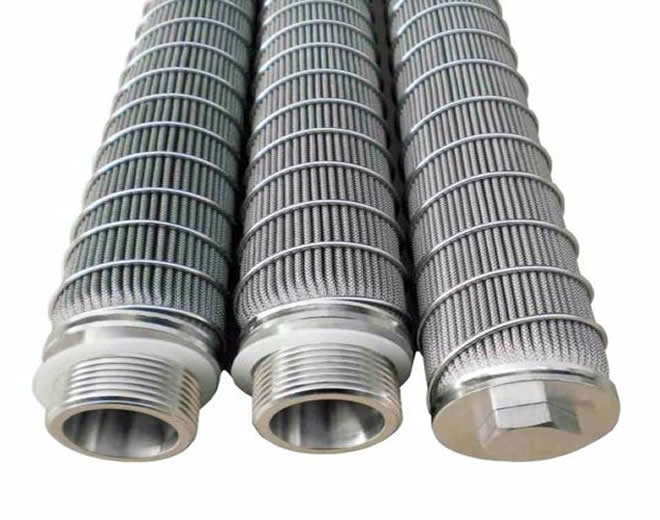The process by which stainless steel filter cartridges can remove impurities mainly relies on the principles of physical filtration and sieving.
Firstly, the filtration process of stainless steel filter begins when the fluid passes through the filter, and the stainless steel fibers or mesh holes in the filter will physically block the particles in the fluid. The structure of the filter element is usually composed of multiple layers of stainless steel wire mesh or sintered stainless steel fibers, and the pore size of these materials is precisely designed to effectively intercept impurity particles of a certain size. For example, if the pore size of the filter element is 5 microns, particles with a diameter greater than 5 microns will be blocked on the surface or inside of the filter element.
Secondly, the multi-layer structure of stainless steel filter cartridges can improve the efficiency and accuracy of filtration. Usually, the outer layer of the filter element has a larger pore size and is responsible for initially filtering larger impurity particles, while the inner layer has a smaller pore size and is specifically designed to capture smaller particles. This multi-level filtration design can effectively reduce the clogging phenomenon of the filter, extend the service life of the filter element, and also improve the overall filtration accuracy.
Furthermore, the material properties of stainless steel filter cartridges also have a significant impact on the removal of impurities. Stainless steel materials have excellent corrosion resistance and mechanical strength, and can work stably in high temperature, high pressure, or corrosive environments. This ensures that the stainless steel filter element does not release harmful substances or lose its filtering ability due to chemical reactions or physical wear during the filtration process, thereby guaranteeing efficient removal of impurities. In addition, stainless steel has a smooth surface and is less prone to impurities, which not only helps improve filtration efficiency but also makes the filter element easier to clean and reuse.
Finally, filtered impurities are usually left on the surface or inside of the filter element, while clean fluid continues to pass through the filter element. This filtering method not only ensures effective interception of impurities, but also guarantees the purity of the filtered liquid or gas. In some high demand industries, such as the food, pharmaceutical, or chemical industries, filtration accuracy and material safety are both very important, and stainless steel filters have become the preferred choice due to their excellent filtration capacity and material properties.



